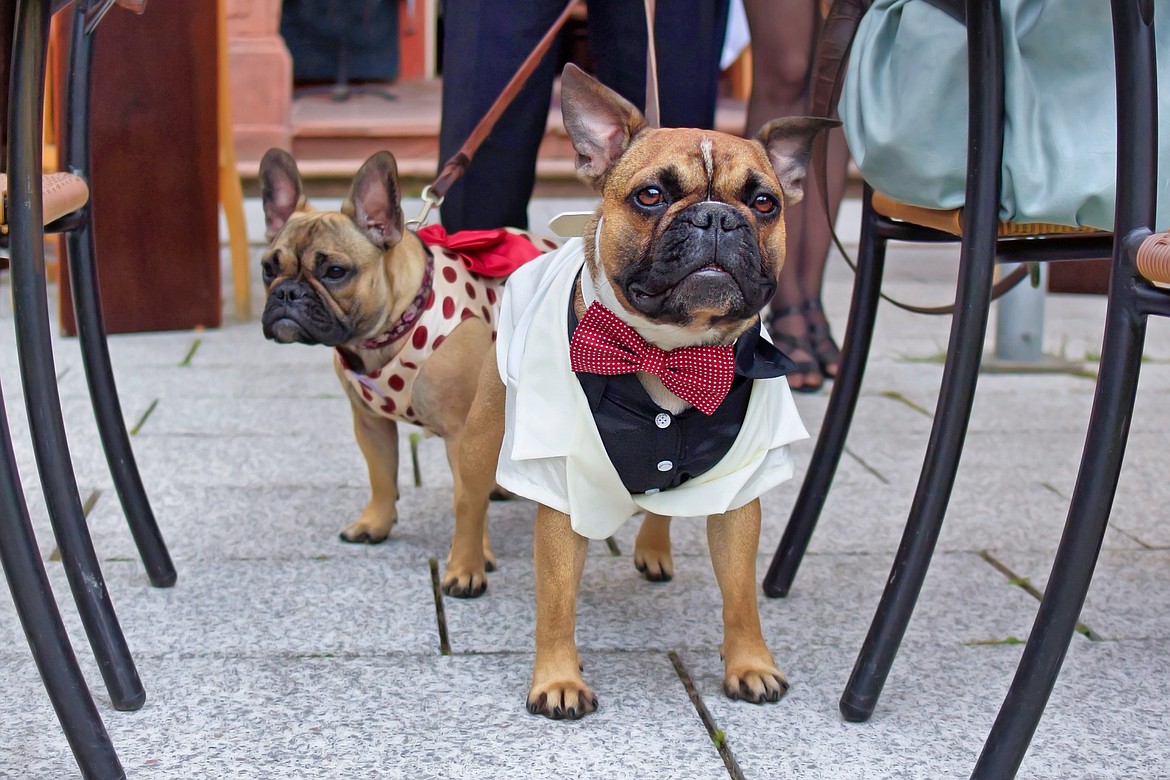Making National Dress Up Your Pet Day a paw-sitive experience
This weekend offers an opportunity for pet owners to celebrate their furry friends with a little extra attention and pampering on National Dress Up Your Pet Day.
To make the Jan. 14 holiday a positive experience for participating pets, Harmony Diers, a veterinary technician at the Texas A&M School of Veterinary Medicine & Biomedical Sciences, explains ways to ensure pets are comfortable wearing clothes.
When choosing an ensemble for dogs and cats, owners should take into consideration three things: mobility of your pet in the outfit, clothing materials, and weather appropriateness.
For mobility, owners should look for costumes and clothing items that allow pets to move about freely and see clearly. For example, costumes that are too tight will restrict movement, and costumes that are too loose can cause pets to get tangled or trip.
Diers recommends owners measure their pet’s neck, chest, back, and stomach and compare these measurements to the sizing chart that comes with costumes.
“A costume should fit snugly enough to allow for normal movement and not have dangling pieces that impede mobility,” Diers said. “Typically, if you can slip two fingers between the material and your pet’s body, the fit will be good.”
Clothing can also hide a pet’s body language when reacting to another pet. If you and your pet celebrate with others, it is especially important that pets be able to see each other’s ear position, tail position, and piloerection—the bristling of a pet’s hair when they react to fear, threats, or excitement—in order to react appropriately.
“Body language may be difficult for the visiting pet to detect, and the costume-wearing pet may not be able to convey proper signals, such as ‘stay away’ or ‘let’s play,’” Diers explained.
After determining if a costume will allow a pet to move, see, and communicate clearly, owners should look at what materials were used to make the costume. Clothing with pieces that can be ingested should be avoided.
“When picking out clothing for your pet, make sure it’s not going to cause any irritation,” Diers said. “If your pet has an open wound, skin infection, or skin allergy, you should consult with your veterinarian before putting them in clothing as this may interfere with any treatment or worsen the problem.”
Additionally, owners should take the weather into consideration when choosing costumes so that their pet does not overheat. Clothing made of breathable fabrics such as cotton or polyester is the better option, as it will keep pets cooler than other fabrics.
Once you’ve purchased a costume, it’s time to dress up your furry friend.
Dogs and cats will show owners they are comfortable wearing clothes through their movements. If a pet is content with wearing a costume, they will move about freely, be excited, and act as they normally would, according to Diers.
“If wearing a costume is a new experience for your pet, it’s a good idea to start out with having your pet wear the costume for a short period of time,” Diers said. “Owners can then slowly and positively increase the duration of time they wear it.”
Diers recommends owners give their pets treats and praise as encouragement for wearing outfits, turning the experience of costume wearing into a positive one.
Nevertheless, owners should not force their furry friend to wear a costume if they show signs of being uncomfortable. Diers said pets who are uncomfortable will remain still, avoid moving or walking, bite at the costume, or try to remove or shake it off.
As is the preference for many human beings, fashion for pets should prioritize comfort. A comfortable pet will ensure that this National Dress Up Your Pet Day is a wonderful experience for the whole family.
Pet Talk is a service of the School of Veterinary Medicine & Biomedical Sciences, Texas A&M University. Stories can be viewed on the web at vetmed.tamu.edu/news/pet-talk. Suggestions for future topics may be directed to [email protected].

